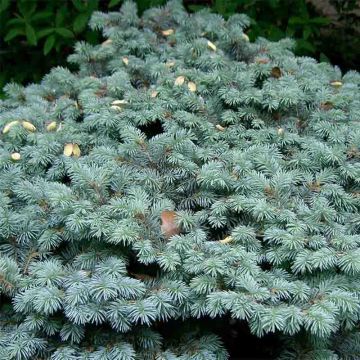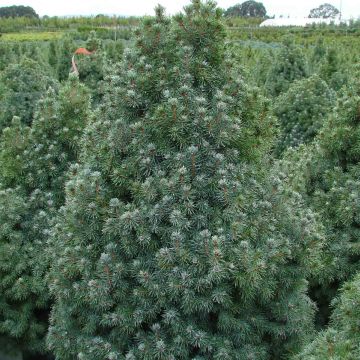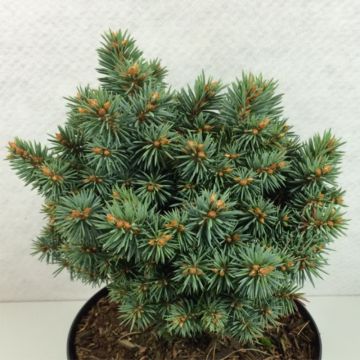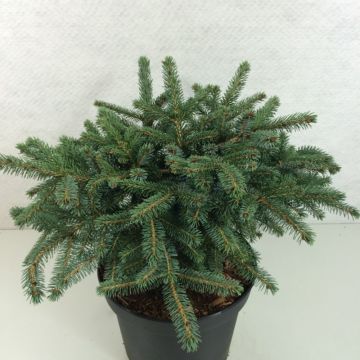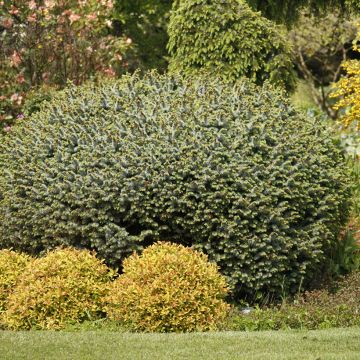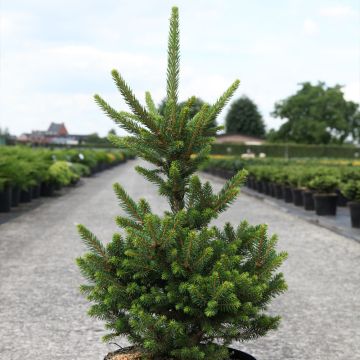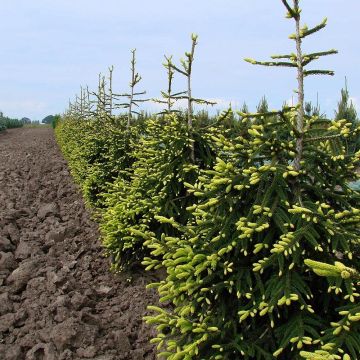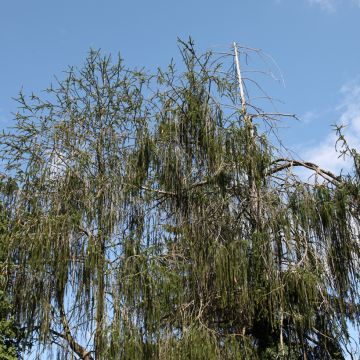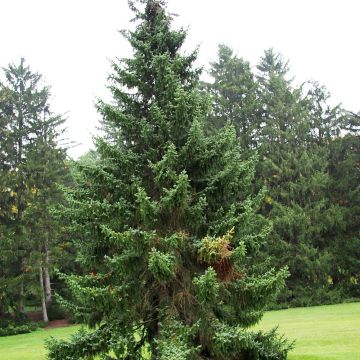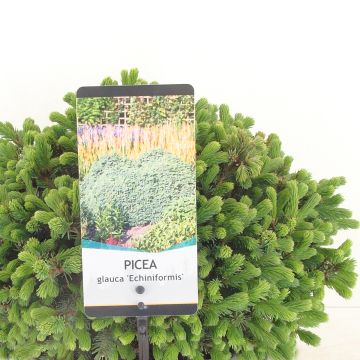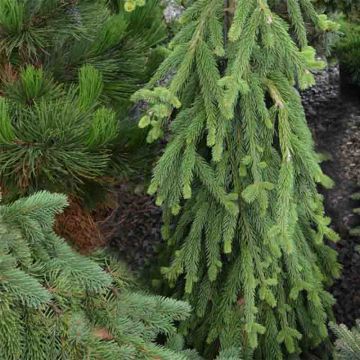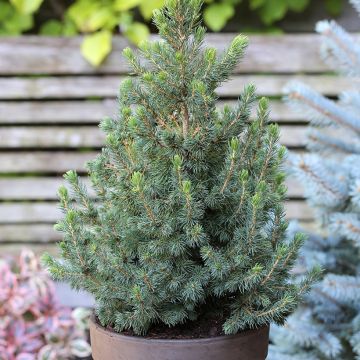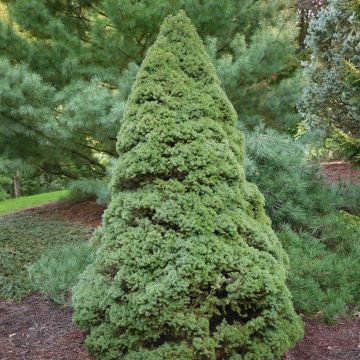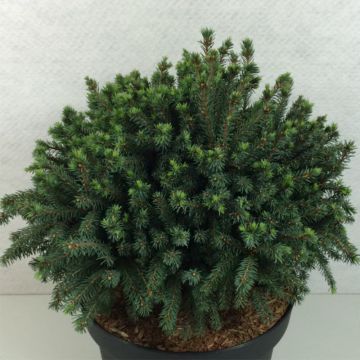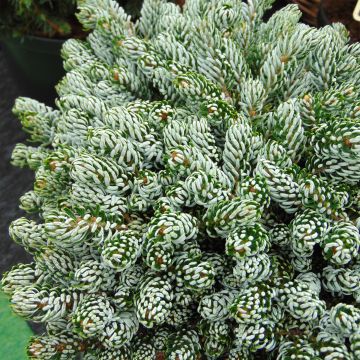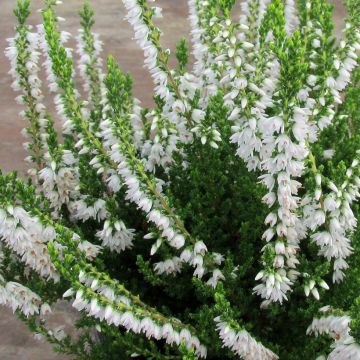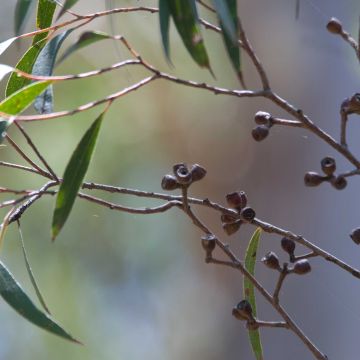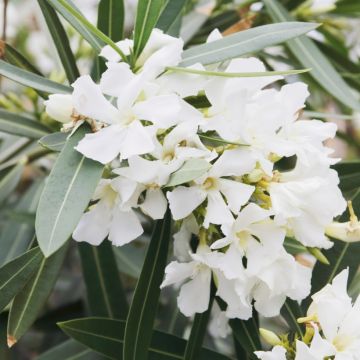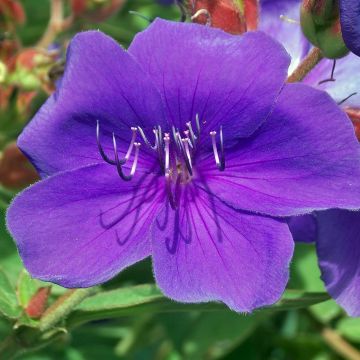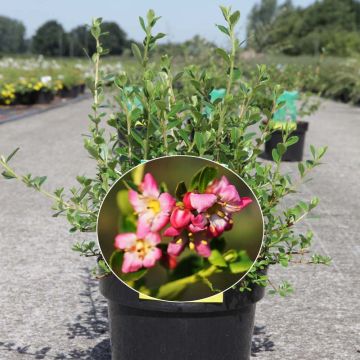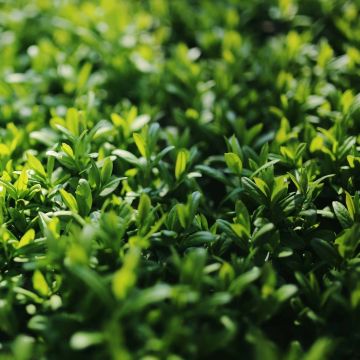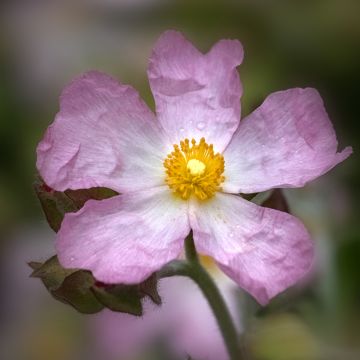

Picea pungens Blue Pearl - Blue Spruce
Picea pungens Blue Pearl - Blue Spruce
Picea pungens Blue Pearl
Blue Spruce, Colorado Blue Spruce, Colorado Spruce, Silver Spruce
Why not try an alternative variety in stock?
View all →This plant carries a 24 months recovery warranty
More information
We guarantee the quality of our plants for a full growing cycle, and will replace at our expense any plant that fails to recover under normal climatic and planting conditions.
From €5.90 for pickup delivery and €6.90 for home delivery
Express home delivery from €8.90.
Does this plant fit my garden?
Set up your Plantfit profile →
Description
The Picea pungens Blue Pearl is a truly dwarf coniferous plant that is extremely beautiful. Falsely called Blue Fir, while it is actually a Colorado Spruce, this miniature conifer is undoubtedly blue. Its evergreen foliage, composed of short needles, allows you to enjoy this intense silvery blue colour all year round, which is absolutely astonishing. Ultimately forming a small ball with a diameter of 50 cm (19.7 in), this dwarf bush will thrive in full sun, especially in a rockery or contemporary setting. Despite its small size, it is a true tough plant capable of withstanding drought and very low temperatures (-25°C (-13 °F) to -°C (32 °F)).
The Picea pungens, also known as the Colorado Blue Spruce or Blue Spruce, is native to the west coast of the United States and the Rocky Mountains of North America, up to Canada. It is a very hardy evergreen conifer belonging to the Pinaceae family. In its natural environment, it grows slowly, presenting an elegant and very regular conical shape, with horizontally layered branches. This tree can reach a height of 25 to 40 m (82 to 131 ft 2 in) in its original habitat, which may seem surprising considering the number of available horticultural dwarf varieties. While this tree does not tolerate long dry summers well, its dwarf forms are much more sober.
The 'Blue Pearl' Colorado Spruce is an astonishing variety with an interesting origin. It is actually derived from a witch's broom found on a 'Fat Albert' Picea pungens in the late 1980s in a nursery in Oregon, United States. Witch's brooms are chaotic growths of shoots that can be found on tree branches while walking in nature. These tufts can be formed by various pathogens, which cause the development of axillary buds. 'Fat Albert' is a variety that reaches a height of 4 to 5 m (13 ft 1 in to 16 ft 5 in), but 'Blue Pearl', from which it originated, has retained the miniature aspect of the original witch's broom. This miniature conifer reaches a diameter of 30 cm (11.8 in) in 10 years, with a height of about 15 cm (5.9 in), forming a slightly flattened cushion. At maturity, it reaches a maximum diameter of 50 cm (19.7 in) with an even smaller height. It has an extremely slow growth rate (2.5 cm (1 in) per year), deserving the name of dwarf conifer, unlike some varieties that end up causing problems in rockeries. It has short, dense needles with a beautiful silvery blue colour throughout the year.
Its architectural habit and original foliage colour make the Picea pungens Blue Pearl a remarkable specimen for miniature and mineral gardens. By mulching the soil at its base to protect it from adventive weeds that could suffocate it, and by placing it in a carefully arranged chaos of rocks, it will be easy to create an attractive scene in a small space. To maintain proportions, be sure to surround it only with other dwarf to very compact plants. A 'Emerald Green' Shrubby Veronica with a rounded habit and persistent green foliage composed of tiny geometrically arranged leaves will be perfect company. The small Tiny Gold Japanese Barberry, with its height of 40 cm (15.7 in), will also not overshadow our dwarf Spruce and will provide a vibrant colour contrast with its small yellow-green leaves.
Report an error about the product description
Picea pungens Blue Pearl - Blue Spruce in pictures


Plant habit
Foliage
Botanical data
Picea
pungens
Blue Pearl
Pinaceae
Blue Spruce, Colorado Blue Spruce, Colorado Spruce, Silver Spruce
Cultivar or hybrid
Other Picea
Planting and care
The Blue Pearl Picea pungens should be planted in autumn or spring in well-drained, light, preferably neutral or slightly acidic soil. It can tolerate some limestone; a sandy, loamy, humus-rich soil would be perfect. Choose a sunny location sheltered from prevailing winds. In excessively wet conditions, it may be more susceptible to root rot. Soak the root balls thoroughly before planting.
Add organic amendment at planting and water generously for the first two years, and during abnormally prolonged droughts. Apply a special conifer fertilizer every year in April and cultivate the soil in summer. This extremely hardy conifer, however, dislikes heavy, waterlogged soils in winter. Pruning is not necessary given the extremely slow growth of this miniature conifer.
It is important to regularly weed around this tiny spruce to avoid competition with adventive weeds that could suffocate it or slow down its growth. A pine bark mulch will help limit this work.
Planting period
Intended location
Care
This item has not been reviewed yet - be the first to leave a review about it.
Evergreen shrubs
Haven't found what you were looking for?
Hardiness is the lowest winter temperature a plant can endure without suffering serious damage or even dying. However, hardiness is affected by location (a sheltered area, such as a patio), protection (winter cover) and soil type (hardiness is improved by well-drained soil).

Photo Sharing Terms & Conditions
In order to encourage gardeners to interact and share their experiences, Promesse de fleurs offers various media enabling content to be uploaded onto its Site - in particular via the ‘Photo sharing’ module.
The User agrees to refrain from:
- Posting any content that is illegal, prejudicial, insulting, racist, inciteful to hatred, revisionist, contrary to public decency, that infringes on privacy or on the privacy rights of third parties, in particular the publicity rights of persons and goods, intellectual property rights, or the right to privacy.
- Submitting content on behalf of a third party;
- Impersonate the identity of a third party and/or publish any personal information about a third party;
In general, the User undertakes to refrain from any unethical behaviour.
All Content (in particular text, comments, files, images, photos, videos, creative works, etc.), which may be subject to property or intellectual property rights, image or other private rights, shall remain the property of the User, subject to the limited rights granted by the terms of the licence granted by Promesse de fleurs as stated below. Users are at liberty to publish or not to publish such Content on the Site, notably via the ‘Photo Sharing’ facility, and accept that this Content shall be made public and freely accessible, notably on the Internet.
Users further acknowledge, undertake to have ,and guarantee that they hold all necessary rights and permissions to publish such material on the Site, in particular with regard to the legislation in force pertaining to any privacy, property, intellectual property, image, or contractual rights, or rights of any other nature. By publishing such Content on the Site, Users acknowledge accepting full liability as publishers of the Content within the meaning of the law, and grant Promesse de fleurs, free of charge, an inclusive, worldwide licence for the said Content for the entire duration of its publication, including all reproduction, representation, up/downloading, displaying, performing, transmission, and storage rights.
Users also grant permission for their name to be linked to the Content and accept that this link may not always be made available.
By engaging in posting material, Users consent to their Content becoming automatically accessible on the Internet, in particular on other sites and/or blogs and/or web pages of the Promesse de fleurs site, including in particular social pages and the Promesse de fleurs catalogue.
Users may secure the removal of entrusted content free of charge by issuing a simple request via our contact form.
The flowering period indicated on our website applies to countries and regions located in USDA zone 8 (France, the United Kingdom, Ireland, the Netherlands, etc.)
It will vary according to where you live:
- In zones 9 to 10 (Italy, Spain, Greece, etc.), flowering will occur about 2 to 4 weeks earlier.
- In zones 6 to 7 (Germany, Poland, Slovenia, and lower mountainous regions), flowering will be delayed by 2 to 3 weeks.
- In zone 5 (Central Europe, Scandinavia), blooming will be delayed by 3 to 5 weeks.
In temperate climates, pruning of spring-flowering shrubs (forsythia, spireas, etc.) should be done just after flowering.
Pruning of summer-flowering shrubs (Indian Lilac, Perovskia, etc.) can be done in winter or spring.
In cold regions as well as with frost-sensitive plants, avoid pruning too early when severe frosts may still occur.
The planting period indicated on our website applies to countries and regions located in USDA zone 8 (France, United Kingdom, Ireland, Netherlands).
It will vary according to where you live:
- In Mediterranean zones (Marseille, Madrid, Milan, etc.), autumn and winter are the best planting periods.
- In continental zones (Strasbourg, Munich, Vienna, etc.), delay planting by 2 to 3 weeks in spring and bring it forward by 2 to 4 weeks in autumn.
- In mountainous regions (the Alps, Pyrenees, Carpathians, etc.), it is best to plant in late spring (May-June) or late summer (August-September).
The harvesting period indicated on our website applies to countries and regions in USDA zone 8 (France, England, Ireland, the Netherlands).
In colder areas (Scandinavia, Poland, Austria...) fruit and vegetable harvests are likely to be delayed by 3-4 weeks.
In warmer areas (Italy, Spain, Greece, etc.), harvesting will probably take place earlier, depending on weather conditions.
The sowing periods indicated on our website apply to countries and regions within USDA Zone 8 (France, UK, Ireland, Netherlands).
In colder areas (Scandinavia, Poland, Austria...), delay any outdoor sowing by 3-4 weeks, or sow under glass.
In warmer climes (Italy, Spain, Greece, etc.), bring outdoor sowing forward by a few weeks.

































